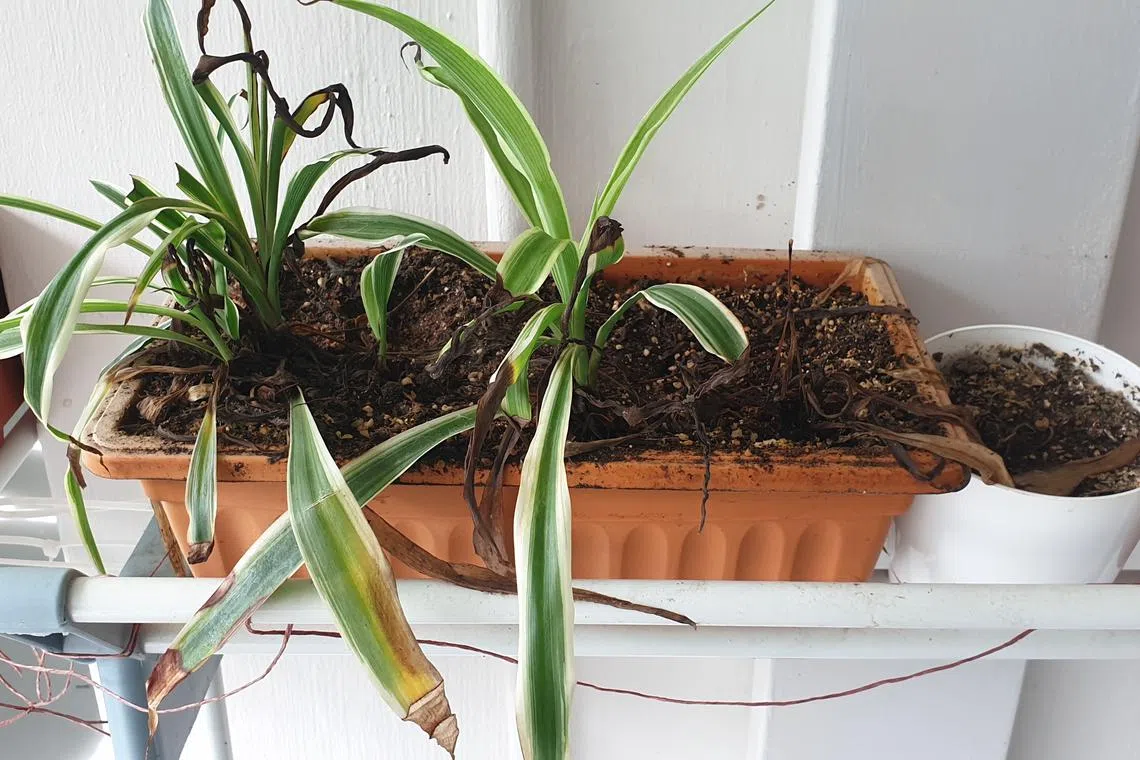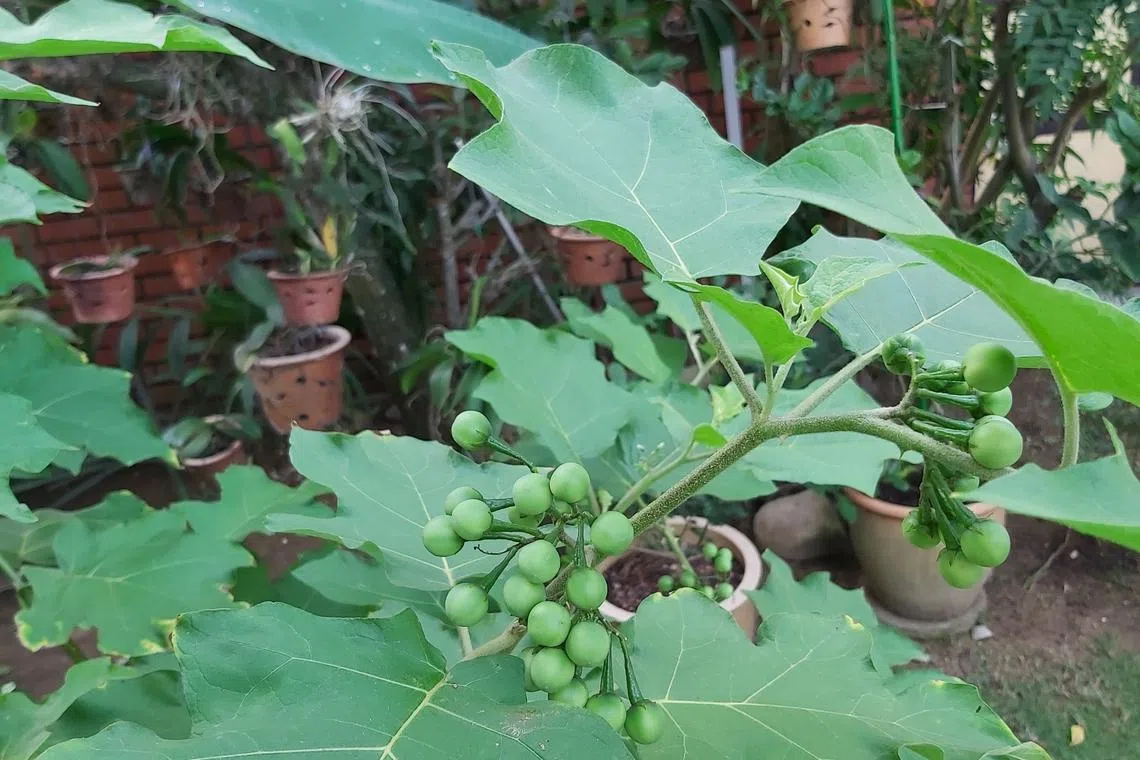Root Awakening: Transplant shock can be minimised by limiting root disturbance
Sign up now: Get ST's newsletters delivered to your inbox
Wilson Wong
Follow topic:
Transplant shock can be minimised by limiting root disturbance
I repot my Carmona retusa every few years when they are root-bound. To minimise transplant shock, I cut off the bottom half of the root ball but leave the top half intact. What is your advice for reducing or minimising transplant shock?
You Kok Kwan
When plants are transplanted, they experience transplant shock whenever their roots are disturbed or damaged. They may wilt, shed leaves or die. Try to avoid disturbing a plant’s roots when moving it from a smaller pot to a larger one.
The procedure you perform may cause major disturbance to the plant. However, Carmona retusa is a fairly resilient shrub that is commonly trained as a bonsai. If taken care of and placed in a semi-shaded, moist and cool spot, the plant should survive and recover over time.
Spider plants require a bright location and well-drained soil to thrive

This container of dying spider plants has been placed deeper in the shade than other containers.
PHOTO: YEO CHENG HENG MATTHEW
The spider plants along my corridor seem to have different growth rates. Some are weak and dying, while some are thriving. Why?
Yeo Cheng Heng Matthew
The thriving spider plants appear to have been grown near the parapet where there is plenty of sunlight, while the container with dying plants is deeper in the shade. In an apartment setting, light intensity decreases as distance from the parapet increases.
Also, avoid planting your spider plants too deeply or they may rot quickly. The crown will trap soil within the leaves and become too wet, especially since the lack of light will cause water to evaporate more slowly. Let the soil dry out slightly before watering again. Growing media should be porous and well-drained.
Ficus infested by sap-sucking pests

The waxy masses on this Ficus shrub are a type of fig psyllid, a sap-sucking pest.
PHOTO: PETER LOON
I have a “bonsai” ficus with an infestation. How can I treat the plant?
Peter Loon
The waxy masses on your Ficus shrub are a type of fig psyllid, a sap-sucking pest. Use a strong jet of water to wash them away. The force of the water jet should be strong enough to wash the pests off, but not enough to damage your plant.
Once this is done, spray your plant thoroughly with summer oil, a pesticide that will penetrate the wax and suffocate any remaining pests. Repeated applications are required to control the pest population.
Immature fruit of Turkey Berry are used in Thai green curry

The Turkey Berry is also known as Devil’s Fig and Terung Pipit.
PHOTO: ANGELINA CHOY
A few of these plants bore fruit in my garden. It has been about two months, but the fruit remain unripe. What are they and are they edible?
Angelina Choy
This shrub grows in the wild in Singapore. Its common names include Turkey Berry, Devil’s Fig and Terung Pipit. Its botanical name is Solanum torvum. Its immature green fruit are used in Thai green curry.
Oriental false hawksbear is a common weed in Singapore

The Oriental false hawksbear has medicinal properties and can be eaten as a vegetable, either raw or cooked.
PHOTO: SEAH SENG HUAT
I found this wild shrub growing in my garden. What is it and is it edible?
Seah Seng Huat
The plant is botanically known as Youngia japonica and its common name is Oriental false hawksbear. This low-growing herbaceous plant occurs as a weed here in flower pots and flower beds, as well as in lawns. It has medicinal properties and can be eaten as a vegetable, either raw or cooked.
Answers by Dr Wilson Wong, an NParks-certified practising horticulturist, parks manager and ISA-certified arborist. He is the founder of Green Culture Singapore and an adjunct assistant professor (Food Science & Technology) at the National University of Singapore.
Have a gardening query? E-mail it with clear, high-resolution pictures of at least 1MB, if any, and your full name to . We reserve the right to edit and reject questions.

